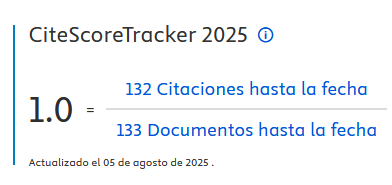El psicoterapeuta en el proceso terapéutico
DOI:
https://doi.org/10.33898/rdp.v31i116.409Palabras clave:
psicoterapeuta, proceso terapéutico, alianza terapéutica, estilo personal del terapeutaResumen
El psicoterapeuta es uno de los protagonistas del proceso terapéutico. Son muchos los esfuerzos dirigidos a estudiar los factores que influyen en el establecimiento de una buena relación entre psicoterapeuta y paciente que permita lograr un buen resultado psicoterapéutico. En el artículo se profundiza en las características, habilidades y acciones del psicoterapeuta en el contexto de la relación de ayuda del proceso psicoterapéutico. Se plantean algunos principios y retos para contribuir y promover la mejora continua en nuestra práctica profesional como psicoterapeutas.
Descargas
Descargas
Publicado
Cómo citar
Número
Sección
Licencia
Los autores/as que publiquen en esta revista aceptan las siguientes condiciones:
- Los autores/as conservan los derechos de autor y ceden a la revista el derecho de la primera publicación, con el trabajo registrado con la Creative Commons CC-BY-NC 4.0 Internacional, que permite a terceros citar el texto y usarlo sin alterarlo y sin beneficio económico, siempre que mencionen la autoría del trabajo y la primera publicación en esta revista.
- Los autores/as pueden realizar otros acuerdos contractuales independientes y adicionales para la distribución no exclusiva de la versión del artículo publicado en esta revista (p. ej., incluirlo en un repositorio institucional o publicarlo en un libro), siempre que indiquen claramente que el trabajo se publicó por primera vez en esta revista.
- Las opiniones expresadas en los trabajos son responsabilidad única de los/as autores/as, no reflejando en ningún caso las opiniones o políticas científicas de la revista.














